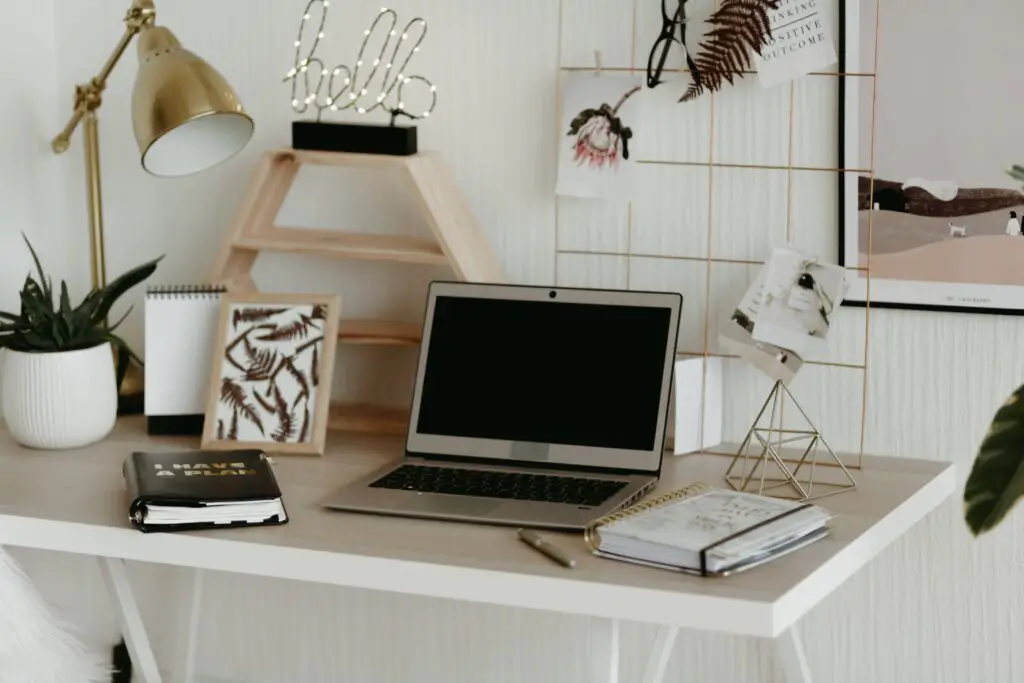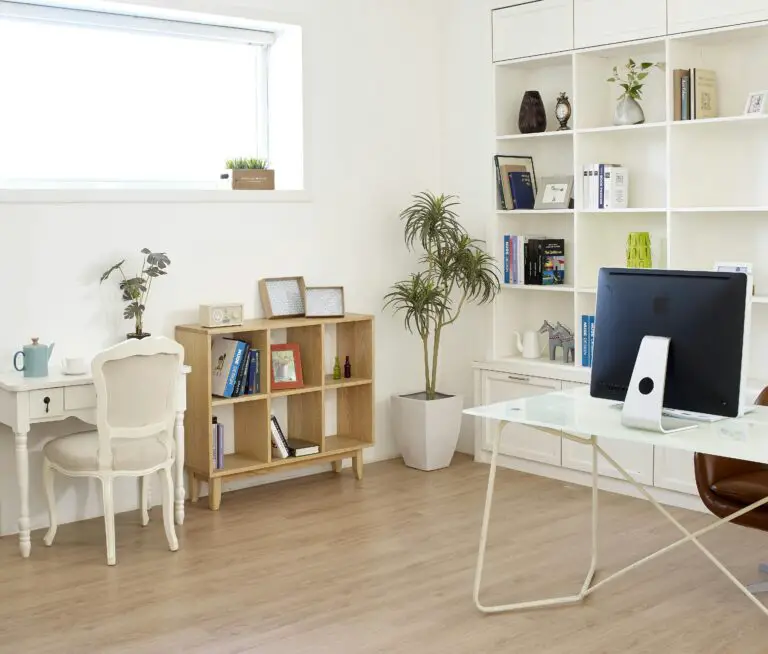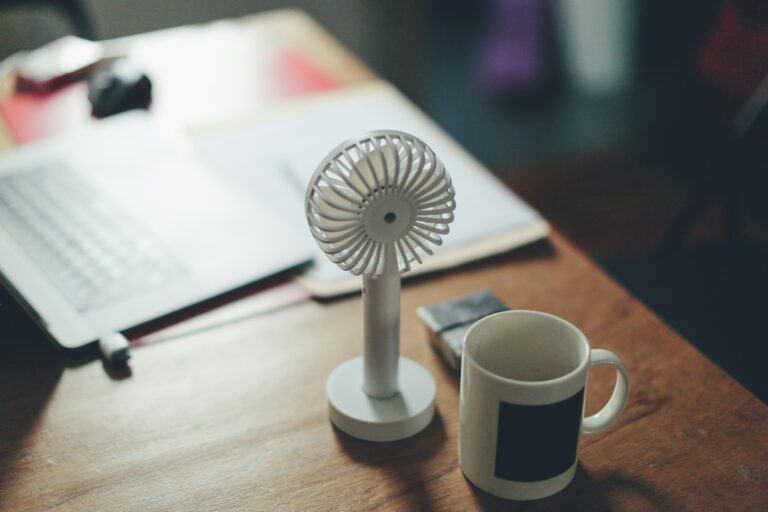Working from home has become increasingly common in today’s world. As more people embrace remote work, it’s crucial to establish a functional and clutter-free home office space. A cluttered workspace can hinder productivity, increase stress levels, and make it challenging to stay focused.
In this blog post, we will explore quick tips and practical strategies to help you keep your home office clutter-free. By implementing these techniques, you can create an organized and inspiring workspace that promotes efficiency and enhances your overall work experience.
I. Assessing Your Current Situation
Before diving into decluttering, it’s essential to assess the current state of your home office. Take a moment to evaluate the layout, organization, and areas that contribute to clutter. Identify any problem areas and sources of disorganization that need attention. By understanding your workspace’s shortcomings, you can develop targeted strategies to address them effectively.
II. Establishing a Clutter-Free Mindset

Understanding the Psychology Behind Clutter
Recognize the psychological impact clutter can have on your mental state and productivity. Clutter can create a sense of overwhelm, leading to distractions and reduced focus. Adopting a clutter-free mindset involves acknowledging the importance of a tidy workspace for improved mental clarity and efficiency.
Adopting a Minimalist Approach
Embrace the principles of minimalism to keep your home office clutter-free. Focus on owning and keeping only what is essential and serves a purpose. Let go of unnecessary items, reduce visual distractions, and create a space that promotes calmness and productivity.
Setting Goals for a Clutter-Free Home Office
Establish specific goals to guide your decluttering efforts. Determine what you aim to achieve, whether it’s creating a streamlined workspace, reducing paper clutter, or optimizing storage solutions. Setting goals will help you stay motivated and focused on maintaining a clutter-free environment.
III. Organizing Your Home Office

Sorting and Categorizing Items
Create designated zones within your home office for different tasks, such as working, storage, and supplies. Sort your items into three categories: “keep,” “donate,” and “discard.” This process allows you to identify items you no longer need and make informed decisions about what should stay in your workspace.
Decluttering Physical Items
Implement the “one-in, one-out” rule, meaning that for every new item you bring into your home office, an existing item must be removed. Let go of unnecessary or outdated items, such as old technology, stationery, or office supplies. Additionally, organize cables and cords using cable management solutions to reduce visual clutter and enhance safety.
Digital Decluttering
Apply the same principles of decluttering to your digital space. Organize computer files and folders, deleting unnecessary documents and organizing them logically. Regularly purge your email inbox, deleting irrelevant emails and setting up filters to manage incoming messages effectively. Utilize cloud storage and backup solutions to reduce the need for physical paper clutter and ensure the security of your digital files.
IV. Optimizing Storage Solutions

Choosing Appropriate Storage Options
Utilize shelves, drawers, and cabinets to maximize storage in your home office. Invest in desk organizers and storage containers to keep small items, such as pens, paperclips, and sticky notes, in order. Consider using vertical storage solutions to save space and keep frequently used items easily accessible.
Prioritizing Frequently Used Items
Keep essential items within reach by designating specific areas for them on your desk or in easily accessible drawers. This ensures that you can quickly locate and use items you need regularly, preventing desk clutter and reducing the time spent searching for things.
Creating a Labeling System
Label storage containers, files, and shelves to maintain an organized workspace. Clear labels make it easier to identify items and maintain a consistent system. Consider implementing color-coded systems for different categories to further enhance organization and efficiency.
V. Maintaining a Clutter-Free Environment

Regular Cleaning and Tidying
Establish a cleaning routine for your home office. Wipe down surfaces regularly, dust off shelves and equipment, and clean your computer screen and keyboard. Empty trash and recycling bins regularly to prevent clutter from accumulating.
Avoiding Clutter Accumulation Habits
Handle mail and documents promptly, sorting them into appropriate categories and filing them away. Minimize paper clutter by digitizing documents whenever possible. Regularly review and purge items, ensuring that you only keep what is necessary and relevant to your work.
VI. Establishing Daily Habits for Organization

Clearing and Organizing Workspace at the End of Each Day
Before finishing work for the day, take a few minutes to clear your workspace. File away documents, return supplies to their designated areas, and ensure that everything is in order for the next day. This habit will help you start each morning with a clean and organized workspace.
Implementing a Task Management System
Utilize to-do lists or digital task managers to keep track of your daily tasks and priorities. By having a system in place, you can stay organized, minimize mental clutter, and focus on completing your work effectively.
VII. Creating a Productive and Inspiring Work Environment

Personalizing the Space Without Adding Clutter
Add personal touches to your home office to make it an inviting and inspiring space. Choose a few meaningful items, such as photos, artwork, or plants, to create a positive work environment. Be mindful not to overcrowd your workspace, as it can lead to visual clutter and distraction.
Incorporating Elements that Inspire Creativity and Focus
Consider incorporating elements that boost your creativity and focus. This could include ambient lighting, ergonomic furniture, or calming scents. Experiment with what works best for you to create an environment that promotes productivity and well-being.
Maintaining a Balance Between Functionality and Aesthetics
Strive for a balance between functionality and aesthetics in your home office. While an organized workspace is essential, it’s equally important to create an environment that reflects your personal style and makes you feel comfortable and motivated to work.
Conclusion
A clutter-free home office is vital for maintaining productivity, focus, and overall well-being while working from home. By following these quick tips and practical strategies, you can create an organized workspace that enhances efficiency and inspires creativity.
Remember to assess your current situation, establish a clutter-free mindset, organize your home office effectively, optimize storage solutions, and maintain daily habits for the organization.
Frequently Asked Questions (FAQs)
1. How can a clutter-free home office improve productivity?
A clutter-free home office provides a clear and focused environment, reducing distractions and mental clutter. It allows you to find what you need quickly, promotes efficient work processes, and enhances overall productivity. Additionally, an organized workspace reduces stress levels and creates a more positive work environment.
2. How often should I declutter my home office?
Regular decluttering is essential to maintain an organized home office. Aim to declutter at least once every few months to keep your workspace tidy and prevent clutter from accumulating. Additionally, incorporate daily habits, such as clearing your workspace at the end of each day, to maintain order and organization consistently.
3. Are there any digital solutions to reduce paper clutter in a home office?
Absolutely! Digitizing documents is an excellent way to reduce paper clutter. Scan important papers and save them digitally using cloud storage or external hard drives. Additionally, set up systems for managing digital files and emails effectively to minimize digital clutter.



